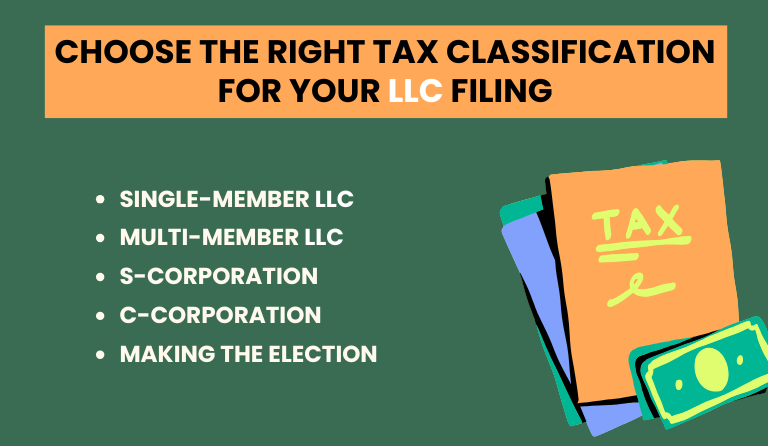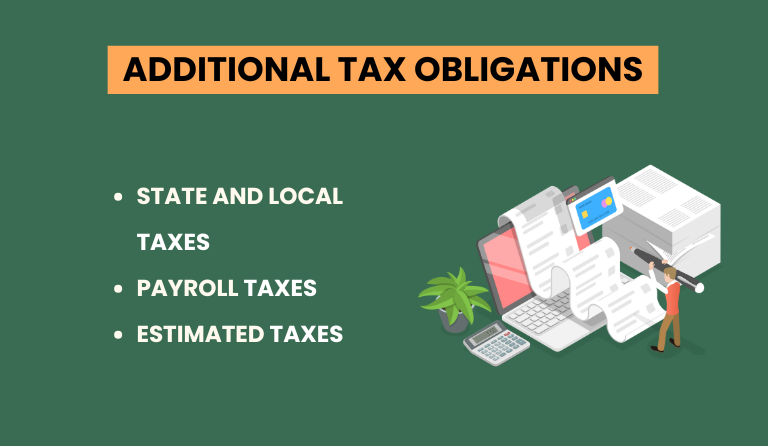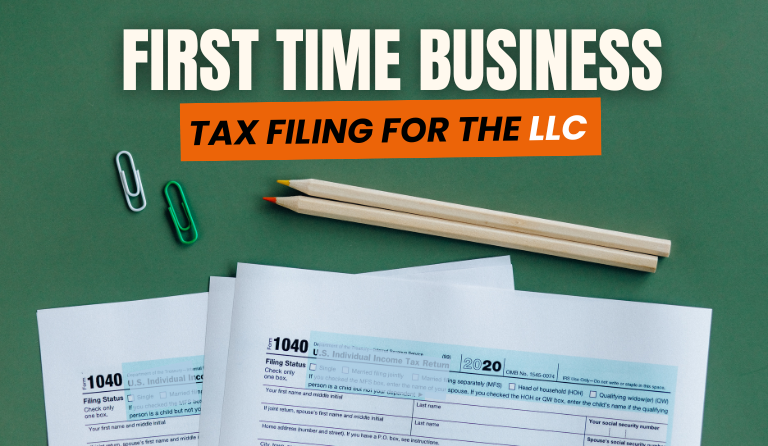Starting a business is a significant milestone, and selecting the right structure plays a pivotal role in your long-term success. For many entrepreneurs, forming a limited liability company (LLC) is an attractive option due to its flexibility, simplicity, and protection of personal assets. However, filing business taxes for LLC for the first time can be a complex and overwhelming experience, especially if you’re unfamiliar with tax regulations. This guide provides comprehensive insights into LLC tax filing, from understanding your classification to leveraging tax deductions and meeting deadlines. By the end, you’ll have a clear roadmap to confidently handle your LLC tax filing.
What is an LLC & Why is LLC Tax Filing Unique?
A limited liability company (LLC) is a hybrid business structure that combines the benefits of corporations and sole proprietorships or partnerships. The primary advantage of an LLC is its ability to shield members (owners) from personal liability for the debts and obligations of the business.
How LLC Taxes Are Unique
LLCs are unique in their tax treatment because the IRS does not consider them a separate tax entity. Instead, LLCs benefit from pass-through taxation, meaning the profits and losses of the business pass through to the members’ personal tax returns. Unlike corporations, LLCs avoid the “double taxation” that occurs when corporate income is taxed at the entity level and again when distributed as dividends.
Additionally, LLCs can choose how they are taxed. By default:
- Single-member LLCs are taxed as sole proprietorships.
- Multi-member LLCs are taxed as partnerships.
However, LLCs have the flexibility to elect taxation as an S-Corporation or C-Corporation by filing the appropriate forms. This flexibility makes LLCs a popular choice for businesses looking to tailor their tax treatment.
How to Choose the Right Tax Classification for Your LLC Tax Filing?
The IRS allows LLCs to decide how they are taxed, which can significantly impact their tax obligations. Here’s an overview of the options available:
Sole Proprietorship (Single-Member LLC)
This is the default tax classification for single-member LLCs. In this structure, the owner reports all business profits and losses on their personal tax return using Schedule C (Form 1040). While simple, this classification means the owner is responsible for paying self-employment taxes on all business income.
Partnership (Multi-Member LLC)
For LLCs with multiple owners, the default tax classification is a partnership. The LLC must file Form 1065 (U.S. Return of Partnership Income) and issue Schedule K-1 to each member, detailing their share of profits and losses. Members report this information on their personal tax returns.

S-Corporation
Electing S-Corporation status can provide significant tax savings for LLC tax filing. In this classification, LLC members can receive a salary and dividends, reducing the self-employment tax burden. However, S-Corps require stricter compliance and must file Form 1120S.
C-Corporation
Although less common, LLCs can choose to be taxed as C-Corporations. This structure subjects the LLC to corporate income tax, but it allows for reinvestment of profits within the business. Filing as a C-Corp requires Form 1120.
Making the Election
To change your tax classification, file IRS Form 8832 (Entity Classification Election) or Form 2553 (for S-Corp status). Carefully consider your business goals and consult a tax professional to determine the most advantageous classification for your limited liability company.
Steps to Filing Business Taxes for LLC for the First Time
Filing business taxes for LLC for the first time involves several steps that depend on your tax classification. Here’s a detailed breakdown:
1. Identify Your LLC Tax Filing Classification
The first step is determining how the IRS recognizes your LLC for tax purposes. Your classification—sole proprietorship, partnership, or corporation—will dictate the forms you need to file and the taxes you owe.
2. Gather All Necessary Documents
Proper documentation is essential for accurate tax filing. Gather the following:
- Employer Identification Number (EIN): This is your LLC’s unique identifier for tax purposes.
- Income Records: Include invoices, sales receipts, and bank statements.
- Expense Records: Document all deductible business expenses, such as rent, utilities, and marketing costs.
3. Determine the Correct Tax Forms
The tax forms you need depend on your LLC’s classification:
- Sole proprietorships: File Form 1040 with Schedule C.
- Partnerships: File Form 1065 and provide Schedule K-1 to members.
- S-Corporations: Use Form 1120S.
- C-Corporations: Use Form 1120.
4. Calculate Your Tax Liability
In addition to income taxes, LLC members must pay self-employment taxes, which cover Social Security and Medicare. The current rate is 15.3% of net earnings. Be sure to include state and local taxes in your calculations, as these vary by location.
5. File and Pay Your Taxes
Submit your completed tax forms by the appropriate deadline. The IRS provides electronic filing options, which are faster and more convenient than paper filing. Ensure you pay any taxes owed to avoid penalties.
Beyond Federal Taxes: Additional Tax Obligations
LLCs often have other tax obligations beyond federal income taxes, including:
- State and Local Taxes: Many states impose franchise taxes, state income taxes, and sales taxes on LLCs. Research your state’s specific requirements to ensure compliance.

- Payroll Taxes: If your LLC has employees, you are responsible for withholding and paying payroll taxes.
- Estimated Taxes: LLC members who earn significant income through the business must make quarterly estimated tax payments to the IRS.
Maximizing Deductions for LLC Tax Filing
Proper deductions can lower your LLC’s taxable income, reducing overall tax liability.
Startup Costs: You can deduct up to $5,000 in startup costs in the first year, including legal fees and office setup expenses.
Marketing and Advertising: All marketing costs, like digital ads and website development, are deductible. This helps reduce your taxable income.
Travel and Meals: Deduct business travel expenses like flights, hotels, and taxis. Meals are 50% deductible if they’re business-related.
Home Office Deduction: You can deduct a portion of your home’s expenses if the space is used exclusively for business. Options include a simplified method ($5/sq ft) or a regular method (based on actual expenses).
Related Article: How Online Tax Filing Services Help in Accuracy & Maximize Tax Refund?
Tools and Resources for Simplifying Tax Filing
Tax filing doesn’t have to be overwhelming, thanks to the availability of modern tools and professional resources:
- Accounting Software: Tools like QuickBooks and FreshBooks can automate tax calculations and help you stay organized.
- Tax Professionals: Hiring a tax consultant like Prado Tax Services can be invaluable, especially for first-time filers or complex tax situations.
- IRS Resources: The IRS website offers free guides, forms, and tools to assist LLC owners with their tax filing needs.
Filing Deadlines and Extensions
Staying on top of deadlines is essential to avoid penalties.
Federal Deadlines
- Sole Proprietorships (Single-Member LLCs): Due by April 15 (same as personal taxes).
- Partnerships and S-Corps: Due by March 15.
Extensions
To file for an extension, use Form 7004. It gives you 6 more months to file, but not to pay taxes. Payments must still be made by the original deadline.
Related Article: Why Early Tax Filing is Critical for Avoiding Tax Stress in San Francisco?
Conclusion
Filing business taxes for LLC for the first time may seem overwhelming, but with proper preparation and guidance, it can be a straightforward process. By understanding your tax classification, staying organized, and leveraging deductions, you can optimize your tax filing and save money.
if you’re looking for professional assistance, Prado Tax Services is here to help. With years of expertise in LLC Tax filing and personalized tax solutions, we ensure a stress-free tax experience. Contact us today to make your tax filing simple and hassle-free.

